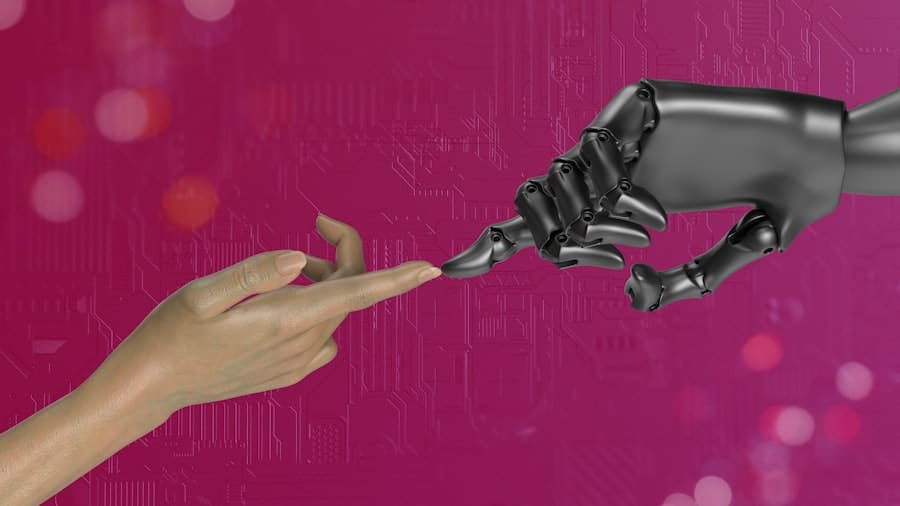Deepfakes, a portmanteau of “deep learning” and “fake,” represent a significant technological advancement that has garnered both fascination and concern. These synthetic media, which utilize artificial intelligence to create hyper-realistic alterations of images, videos, and audio, have the potential to mislead audiences by fabricating events or statements that never occurred. The implications of deepfakes extend far beyond mere entertainment; they pose serious threats to personal privacy, political integrity, and societal trust.
For instance, deepfake technology has been employed in creating misleading political advertisements, resulting in the manipulation of public opinion during elections. The ability to fabricate realistic content raises questions about the authenticity of media and the reliability of information sources. The societal impact of deepfakes is multifaceted.
On one hand, they can be used for creative expression in film and art, allowing creators to push the boundaries of storytelling. On the other hand, the malicious use of deepfakes can lead to defamation, harassment, and the erosion of trust in legitimate media. High-profile cases have emerged where individuals have been targeted with non-consensual deepfake pornography, leading to severe emotional distress and reputational damage.
As deepfake technology becomes more accessible, the potential for misuse increases, necessitating a deeper understanding of its implications and the development of countermeasures.
Key Takeaways
- Deepfakes are synthetic media in which a person in an existing image or video is replaced with someone else’s likeness using AI technology, and they have the potential to greatly impact society.
- AI technology is increasingly being used to detect and analyze deepfakes, helping to identify and combat the spread of manipulated media.
- AI plays a crucial role in tracking deepfake propagation trends, allowing for a better understanding of how these manipulated media are being disseminated.
- Understanding deepfake propagation trends is important for developing effective strategies to combat the spread of misinformation and protect against potential harm.
- While AI has made significant advancements in analyzing deepfake propagation trends, there are still challenges and limitations that need to be addressed, such as the ability to detect increasingly sophisticated deepfakes.
The Rise of AI in Detecting and Analyzing Deepfakes
AI-Powered Detection Methods
Techniques such as convolutional neural networks (CNNs) have been employed to analyze visual data, enabling systems to discern between authentic and manipulated content with remarkable accuracy. For instance, researchers have developed AI models that can detect deepfakes by examining facial movements, inconsistencies in lighting, and unnatural audio-visual synchronization.
By leveraging large datasets of both genuine and manipulated media, AI systems can learn to recognize patterns indicative of deepfake technology.
Safeguarding Against Misinformation
This capability is crucial for developing robust detection methods that can keep pace with the rapid advancements in deepfake creation tools. As a result, organizations and platforms are increasingly integrating AI-driven detection systems into their content moderation processes to safeguard against misinformation and protect users from potential harm.
AI’s Role in Tracking Deepfake Propagation Trends
Beyond detection, AI plays a critical role in tracking the propagation trends of deepfakes across various platforms. Understanding how deepfakes spread is essential for developing effective countermeasures and informing public policy. Machine learning algorithms can analyze vast amounts of data from social media platforms, news websites, and video-sharing services to identify patterns in how deepfakes are shared and consumed.
For instance, AI can track the velocity at which a deepfake video goes viral, pinpointing key influencers or networks that contribute to its dissemination. Moreover, AI can help identify the contexts in which deepfakes are most likely to be shared.
This information is invaluable for developing targeted educational campaigns aimed at raising awareness about deepfakes and promoting media literacy among users. By understanding the dynamics of deepfake propagation, stakeholders can better prepare for potential misinformation crises and implement strategies to mitigate their impact.
The Importance of Understanding Deepfake Propagation Trends
Understanding deepfake propagation trends is crucial for several reasons. First and foremost, it allows researchers, policymakers, and technology companies to anticipate the potential impact of deepfakes on public discourse and societal norms. By analyzing how deepfakes spread, stakeholders can identify vulnerable populations that may be disproportionately affected by misinformation campaigns.
For example, during election cycles or significant political events, certain demographics may be targeted with tailored deepfake content designed to sway their opinions or incite division. Additionally, comprehending these trends aids in the development of effective countermeasures. If researchers can identify common pathways through which deepfakes proliferate—such as specific social media platforms or forums—they can devise strategies to disrupt these channels.
This might involve collaborating with platform providers to enhance detection capabilities or implementing stricter content moderation policies. Furthermore, understanding propagation trends can inform educational initiatives aimed at fostering critical thinking skills among users, empowering them to discern between authentic and manipulated content more effectively.
Challenges and Limitations of AI in Analyzing Deepfake Propagation Trends
Despite the advancements in AI technology for analyzing deepfake propagation trends, several challenges and limitations persist. One significant hurdle is the ever-evolving nature of deepfake creation techniques. As creators develop more sophisticated methods for producing realistic content, detection algorithms must continuously adapt to keep pace.
This arms race between deepfake creators and detection technologies presents a formidable challenge for researchers and developers alike. Moreover, the rapid proliferation of new platforms and communication channels complicates efforts to track deepfake dissemination effectively. Another limitation lies in the availability and quality of data used for training AI models.
Many existing datasets may not adequately represent the diverse range of deepfakes being created today. This lack of comprehensive data can hinder the effectiveness of detection algorithms and their ability to generalize across different types of manipulated content. Additionally, ethical concerns arise when collecting data from social media platforms or other sources without user consent.
Striking a balance between effective analysis and respecting individual privacy rights remains a significant challenge in this field.
Ethical Considerations in Using AI to Analyze Deepfake Propagation Trends
The use of AI in analyzing deepfake propagation trends raises several ethical considerations that must be addressed to ensure responsible deployment of these technologies. One primary concern is the potential for bias in AI algorithms. If training data is skewed or unrepresentative, it may lead to biased outcomes that disproportionately affect certain groups or perpetuate existing stereotypes.
For instance, if an AI model is trained predominantly on Western media examples, it may struggle to accurately detect deepfakes originating from other cultural contexts. Furthermore, there are ethical implications surrounding privacy and consent when utilizing AI for analysis. The collection of data from social media platforms often involves monitoring user behavior without explicit consent, raising questions about surveillance and individual rights.
Researchers must navigate these ethical dilemmas carefully, ensuring that their methodologies respect user privacy while still providing valuable insights into deepfake propagation trends. Establishing clear ethical guidelines for AI research in this area is essential for fostering public trust and ensuring that technological advancements benefit society as a whole.
Future Implications of AI in Analyzing Deepfake Propagation Trends
Looking ahead, the future implications of AI in analyzing deepfake propagation trends are vast and multifaceted. As technology continues to advance, we can expect more sophisticated detection algorithms capable of identifying even the most subtle manipulations in media content. This evolution will likely lead to enhanced tools for journalists, fact-checkers, and content moderators who play critical roles in maintaining information integrity within society.
Moreover, as public awareness about deepfakes grows, there will be an increasing demand for transparency regarding how AI systems operate in detecting manipulated content. Users will likely seek assurances that the tools they rely on are accurate and unbiased. This demand could drive innovation in explainable AI—systems designed to provide clear insights into their decision-making processes—thereby fostering greater trust among users.
Additionally, collaboration between academia, industry, and government will be essential for addressing the challenges posed by deepfakes effectively. By pooling resources and expertise, stakeholders can develop comprehensive strategies that encompass detection technologies, public education initiatives, and regulatory frameworks aimed at mitigating the risks associated with deepfakes while preserving freedom of expression.
The Need for Continued Research and Development in AI for Deepfake Analysis
The landscape surrounding deepfakes is rapidly evolving, necessitating ongoing research and development efforts focused on leveraging AI for effective analysis and detection. As society grapples with the implications of this technology on trust and authenticity in media, it becomes increasingly important to invest in innovative solutions that can keep pace with emerging threats. Continued collaboration among researchers, technologists, policymakers, and educators will be vital in addressing the challenges posed by deepfakes while harnessing their potential for positive applications.
In this context, fostering a culture of media literacy will empower individuals to critically evaluate the information they encounter online. By equipping users with the skills needed to discern between genuine content and manipulative media, society can build resilience against misinformation campaigns fueled by deepfakes. Ultimately, a proactive approach that combines technological advancements with educational initiatives will be essential for navigating the complexities introduced by this transformative technology while safeguarding democratic values and societal trust.
In a related article, Discover the Best Free Software for Voice Recording Now, explores the advancements in technology that have made voice recording more accessible and user-friendly. This article delves into the various free software options available for voice recording and highlights their features and benefits. As AI continues to play a significant role in analyzing deepfake propagation trends, the use of voice recording software can also benefit from these technological advancements.
FAQs
What is AI?
AI, or artificial intelligence, refers to the simulation of human intelligence in machines that are programmed to think and act like humans. It involves the use of algorithms and data to enable machines to learn from experience, adapt to new inputs, and perform human-like tasks.
What are deepfakes?
Deepfakes are synthetic media in which a person in an existing image or video is replaced with someone else’s likeness using AI. This technology has been used to create realistic but fake videos and images of people saying and doing things that they never actually said or did.
How does AI analyze deepfake propagation trends?
AI can analyze deepfake propagation trends by monitoring and analyzing large volumes of data from social media platforms, websites, and other online sources. It can identify patterns, trends, and anomalies in the spread of deepfake content, helping researchers and analysts understand how and why deepfakes are being created and shared.
What role does AI play in combating deepfake propagation?
AI plays a crucial role in combating deepfake propagation by developing and deploying detection and verification tools. These AI-powered tools can help identify and flag potential deepfake content, enabling platforms and users to take action to prevent the spread of misinformation and disinformation.
What are the challenges of using AI to analyze deepfake propagation trends?
Challenges of using AI to analyze deepfake propagation trends include the rapid evolution of deepfake technology, the sheer volume of online content to monitor, and the need for ongoing updates and improvements to AI algorithms and models to keep pace with new developments in deepfake creation and dissemination.



